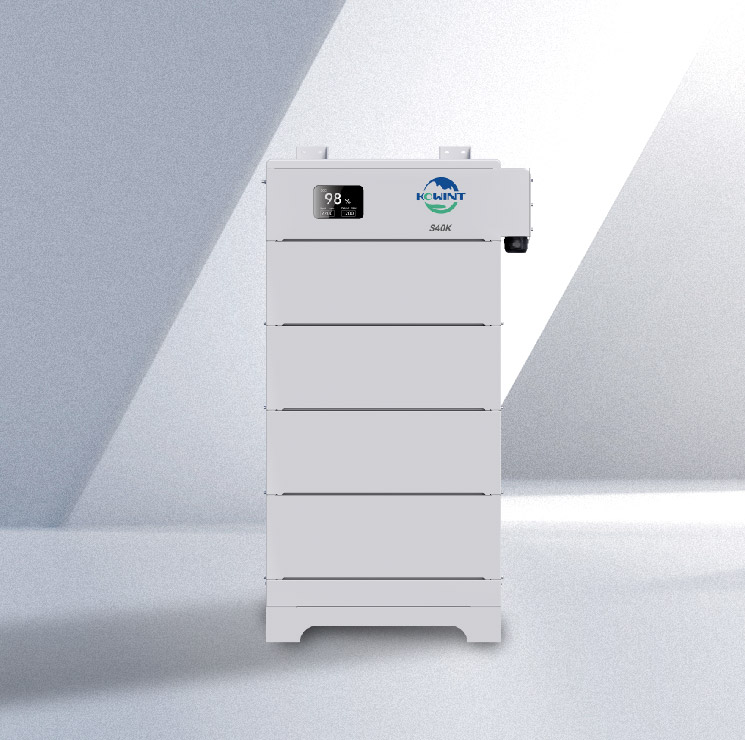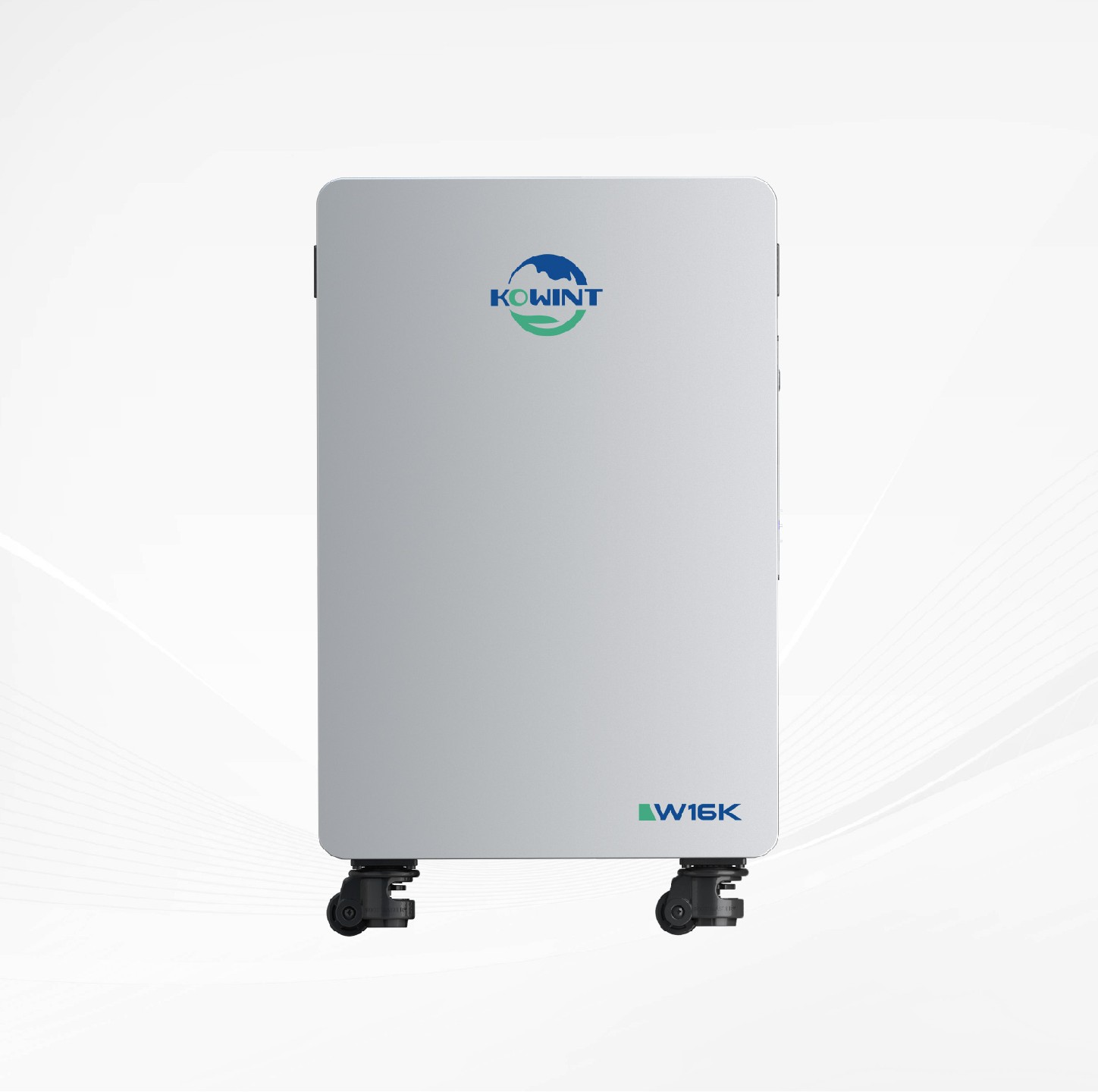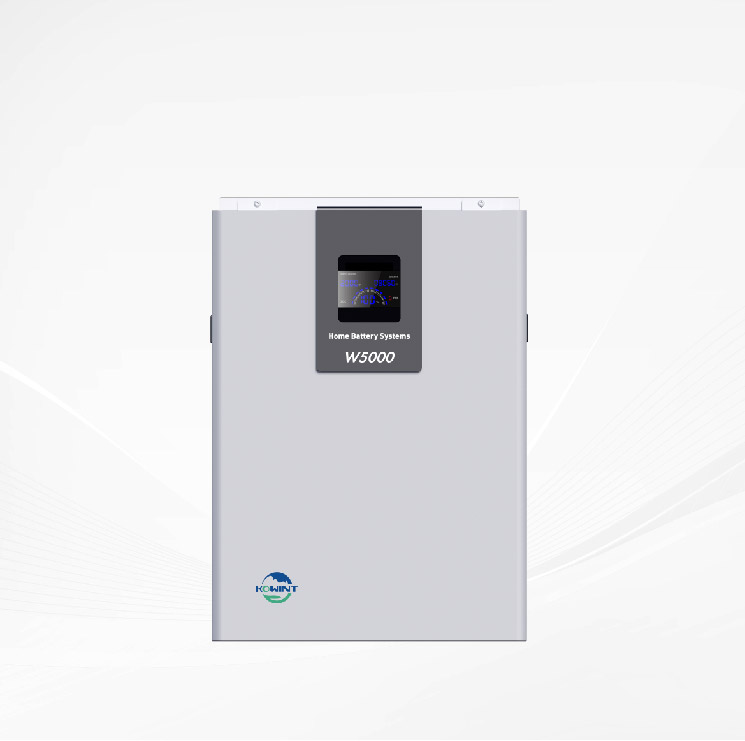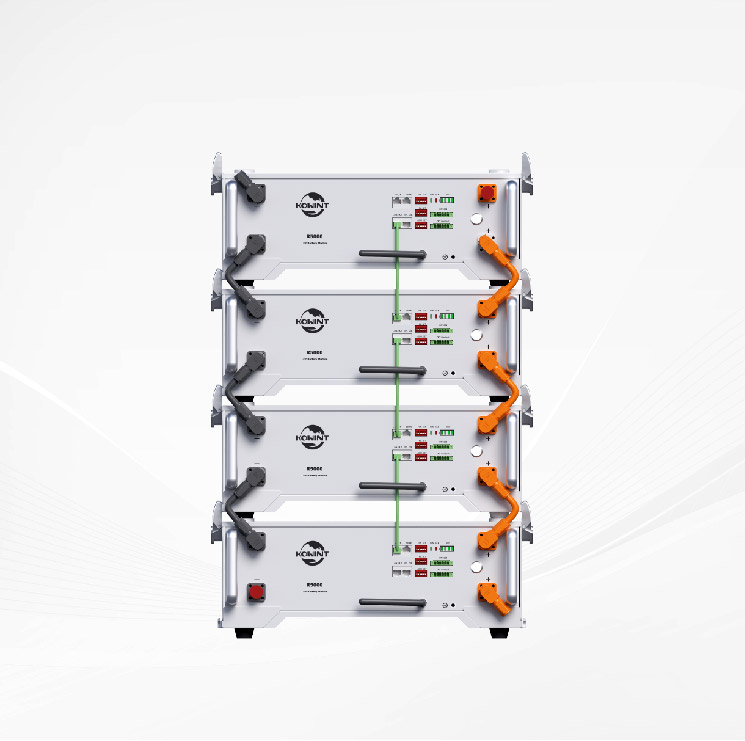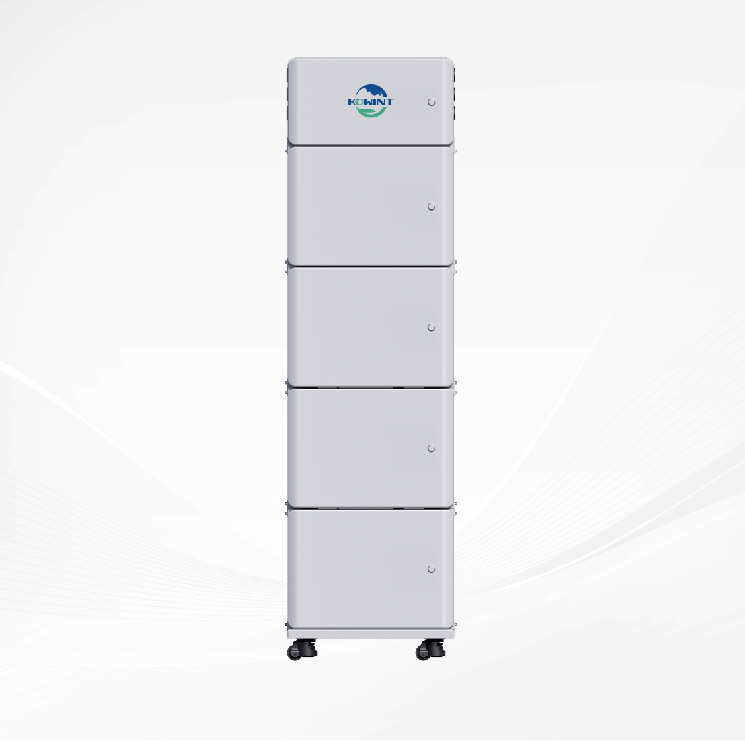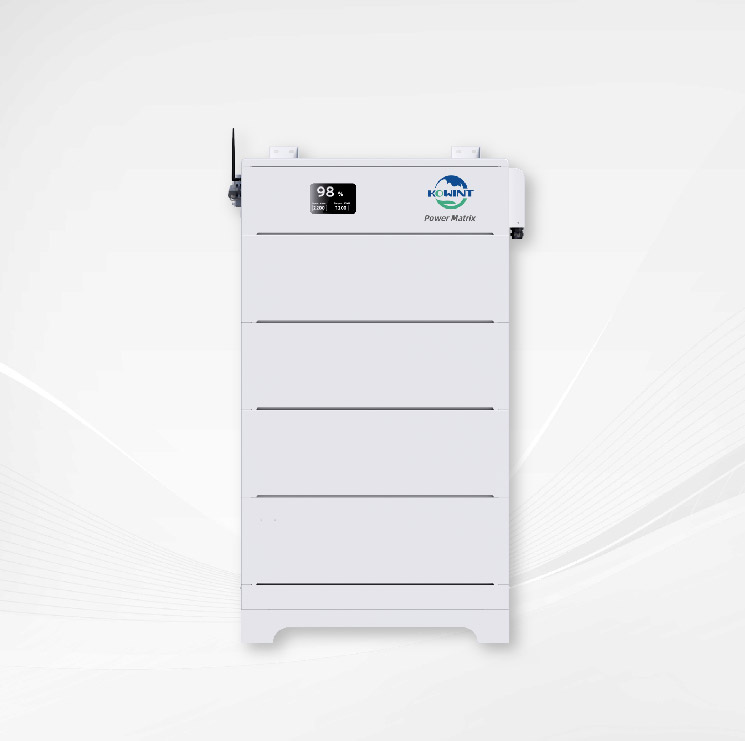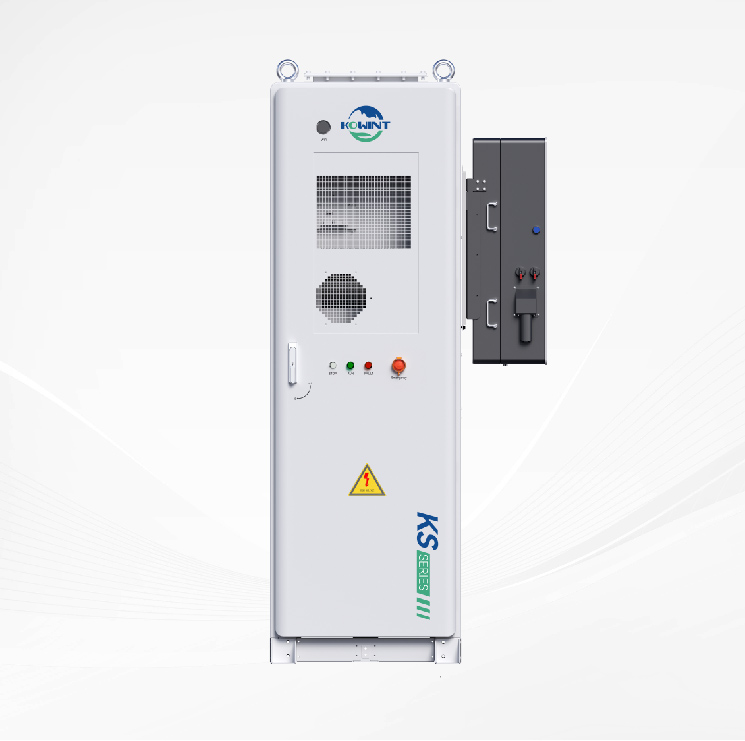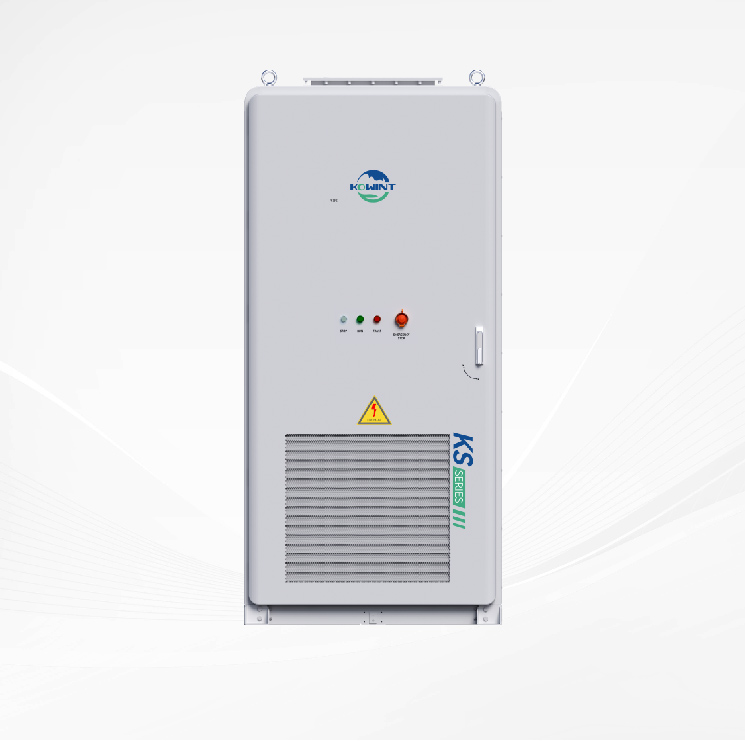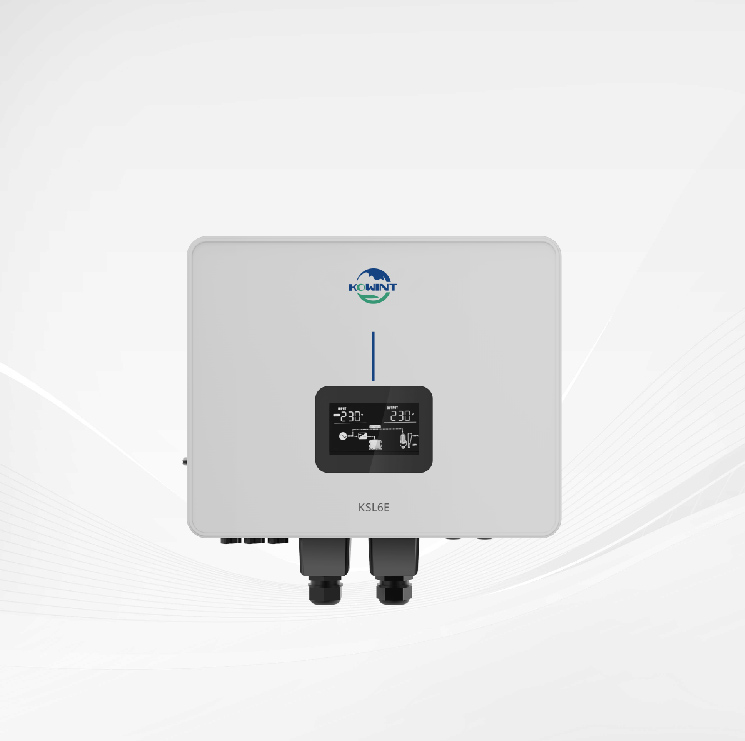Unveiling the Power Behind Battery Energy Storage System (BESS) Components
In the ever-evolving landscape of energy storage, Battery Energy Storage Systems (BESS) have emerged as a pivotal player, reshaping the way we harness and utilize power. Understanding the intricate components that constitute a BESS is crucial for comprehending its significance in modern energy infrastructure.
Battery Technologies in BESS
Battery technologies form the core of any Battery Energy Storage System (BESS). The selection of batteries plays a pivotal role in determining the efficiency, longevity, and overall performance of the storage system. Let's delve into the specifics of key battery technologies commonly employed in BESS.
Lithium-ion Batteries:
1. Chemistry and Structure:
l Lithium-ion batteries operate on the movement of lithium ions between the positive and negative electrodes during discharge and charge cycles.
l Common cathode materials include lithium cobalt oxide (LiCoO2), lithium manganese oxide (LiMn2O4), and lithium iron phosphate (LiFePO4).
2. Applications within the BESS Framework:
l Lithium-ion batteries are widely utilized in BESS for their high energy density, long cycle life, and relatively low self-discharge rates.
l Common applications include grid support, renewable energy integration, and various stationary storage systems.
Flow Batteries:
1. Unique Characteristics Setting Them Apart:
l Unlike traditional batteries, flow batteries store energy in liquid electrolytes stored in external tanks.
l Key types include vanadium redox flow batteries (VRFB) and zinc-bromine flow batteries.
2. Advantages and Challenges in BESS Applications:
l Flow batteries offer scalability and the ability to decouple power and energy capacity.
l Challenges include lower energy density and complexity in system design.
Sodium-ion Batteries:
1. An Exploration of an Emerging Technology:
l Sodium-ion batteries use sodium ions instead of lithium ions for charge and discharge.
l Sodium-ion technology is gaining attention due to the abundance of sodium resources.
l Potential Roles within BESS:
l Sodium-ion batteries exhibit promise for grid-scale energy storage, especially in situations where lithium resources may be limited.
l Challenges include lower energy density compared to lithium-ion counterparts.
Understanding the nuances of these battery technologies is essential for optimizing BESS performance. The continuous evolution of battery technologies holds the key to overcoming challenges and pushing the boundaries of energy storage capabilities.

Inverters and Power Electronics
In the realm of Battery Energy Storage Systems (BESS), the significance of inverters and power electronics cannot be overstated. These components play a crucial role in converting and managing the flow of electricity, ensuring optimal efficiency and stability. Let's delve into the details of these integral elements within a BESS framework.
Role of Inverters:
1. DC to AC Conversion:
l Inverters are responsible for converting the direct current (DC) output from batteries into alternating current (AC), which is the standard form of electricity used in homes and businesses.
l This conversion enables the seamless integration of BESS with the electrical grid.
2. Voltage and Frequency Regulation:
l Inverters contribute to maintaining stable voltage and frequency levels, crucial for the reliability and safety of the electrical grid.
l Advanced inverters can dynamically adjust output parameters to respond to grid conditions and demands.
Power Electronic Components:
1. Converters and Transformers:
l Converters are employed to regulate the voltage and current levels within the BESS, ensuring compatibility with grid requirements.
l Transformers facilitate the adjustment of voltage levels for efficient energy transfer.
2. Impact on Overall Efficiency and Performance:
l The efficiency of power electronic components directly influences the overall performance of a BESS.
l Well-designed converters and transformers contribute to minimizing energy losses during the conversion process.
Advanced Features and Functionality:
1. Smart Inverters:
l Integration of smart technologies allows for enhanced grid interaction, including features like voltage and frequency support, reactive power control, and grid-forming capabilities.
l Smart inverters enable BESS to actively contribute to grid stability and resilience.
2. Bi-Directional Operation:
l BESS inverters are designed for bidirectional operation, allowing energy to flow both from the batteries to the grid (discharge) and from the grid to the batteries (charge).
l This bidirectional capability enables BESS to perform various grid support functions, including peak shaving and load leveling.
Challenges and Innovations:
1. Efficiency Improvements:
l Ongoing research focuses on improving the efficiency of inverters and power electronics to reduce energy losses during the conversion process.
l Innovations in semiconductor materials and design contribute to higher efficiency levels.
2. Grid Integration Challenges:
l Challenges such as grid synchronization and compliance with grid codes are actively addressed to ensure seamless integration of BESS into diverse electrical grids.
l Improved communication protocols enable BESS to respond rapidly to grid signals and requirements.
Understanding the intricate role of inverters and power electronics in a BESS is essential for harnessing the full potential of energy storage systems. Continuous advancements in these components are key to enhancing the efficiency, reliability, and adaptability of BESS in the evolving energy landscape.
Energy Management Systems (EMS)
Energy Management Systems (EMS) serve as the brains behind Battery Energy Storage Systems (BESS), orchestrating the efficient utilization and distribution of energy. These systems play a pivotal role in optimizing performance, extending the lifespan of batteries, and ensuring adaptability to dynamic grid conditions. Let's delve deeper into the components and functionalities of EMS within the context of BESS.
Definition and Purpose:
1. Contributions to BESS Functionality:
l EMS in BESS refers to a sophisticated suite of software and hardware components responsible for overseeing, controlling, and optimizing energy storage operations.
l Its primary purpose is to enhance system efficiency, address demand fluctuations, and maximize the economic and environmental benefits of BESS.
2. Decision-making Processes and Control Algorithms:
l Advanced algorithms embedded in EMS enable real-time decision-making, allowing the system to respond swiftly to changes in energy demand, grid conditions, and battery state.
l Control algorithms factor in variables like energy prices, grid signals, and historical data to make informed decisions about when to charge or discharge the battery.
Optimization of Energy Flow:
1. Adapting to Demand and Supply Dynamics:
l EMS continuously analyzes real-time data to predict energy demand patterns and grid conditions.
l By dynamically adjusting the charging and discharging cycles, EMS ensures optimal energy flow, reducing the strain on the grid during peak periods and supporting it during low demand.
2. Ensuring Peak Efficiency through EMS:
l EMS is instrumental in maintaining the battery within its optimal operating range, preventing overcharging or deep discharging that could compromise the battery's health.
l It considers factors such as temperature, state of charge (SOC), and discharge rates to prolong battery life.
Advanced Features of EMS:
1. Predictive Analytics:
l Utilizing historical data and machine learning algorithms, EMS can predict future energy demand patterns, enabling proactive decision-making.
l Predictive analytics contribute to better grid integration and more accurate energy storage planning.
2. Dynamic Load Management:
l EMS can manage energy distribution to specific loads based on priority and demand, ensuring critical systems receive power during peak periods.
l Dynamic load management enhances grid stability and resilience.
Interoperability and Integration Challenges:
1. Compatibility with Grid Management Systems:
l EMS must be designed to seamlessly integrate with broader grid management systems, enhancing coordination and communication between the BESS and the grid.
l Challenges may arise in achieving interoperability with diverse grid architectures and protocols.
2. Cybersecurity Considerations:
l As EMS relies on digital communication and control systems, ensuring robust cybersecurity measures is paramount to protect against potential threats.
l Encryption, authentication, and intrusion detection systems are crucial components of a secure EMS.
The Future of EMS in BESS:
1. Integration with IoT and Smart Grids:
l EMS is evolving to incorporate Internet of Things (IoT) technologies and smart grid capabilities for more granular control and real-time responsiveness.
l This integration enhances the overall intelligence and adaptability of BESS.
2. Flexibility for Future Energy Markets:
l As energy markets evolve, EMS is expected to evolve in tandem, providing flexibility to adapt to new regulatory frameworks, pricing structures, and grid management strategies.
l Enhanced flexibility ensures the long-term viability of BESS in diverse energy landscapes.
Understanding the intricacies of Energy Management Systems is essential for unlocking the full potential of Battery Energy Storage Systems. As technology advances, EMS will continue to be at the forefront of optimizing energy storage solutions for a sustainable and resilient energy future.

Monitoring and Control Systems
Monitoring and control systems are the vigilant eyes and strategic command centers of Battery Energy Storage Systems (BESS). These systems are integral in ensuring the safe, efficient, and reliable operation of BESS components. In this section, we'll delve into the specifics of monitoring and control systems, exploring their key functions and the importance of real-time oversight in the dynamic energy storage landscape.
Importance of Real-Time Monitoring:
1. Monitoring State of Charge (SOC) and State of Health (SOH):
l Real-time monitoring of SOC provides crucial information about the amount of charge remaining in the battery, enabling accurate predictions of remaining operational time.
l SOH monitoring assesses the overall health of the battery, identifying any degradation or performance issues.
2. Voltage and Temperature Monitoring:
l Continuous monitoring of voltage levels ensures that the BESS operates within the desired voltage range, preventing potential damage.
l Temperature monitoring is essential for identifying and mitigating thermal issues that can affect battery performance and lifespan.
Control Systems for Safety and Efficiency:
1. Preventing Overcharging and Overheating:
l Control systems implement sophisticated algorithms to prevent overcharging, which can damage batteries and reduce their lifespan.
l Overheating protection mechanisms include thermal sensors and active cooling systems to maintain optimal operating temperatures.
2. Integration with Broader Energy Grid Management:
l Control systems in BESS are designed to seamlessly integrate with broader energy grid management systems.
l This integration allows BESS to respond to grid signals, providing grid support functions such as frequency regulation and voltage support.
Advanced Monitoring Features:
1. Predictive Maintenance:
l Utilizing data analytics and machine learning, monitoring systems can predict potential equipment failures or degradation, enabling proactive maintenance.
l Predictive maintenance minimizes downtime and extends the overall lifespan of BESS components.
2. Fault Detection and Diagnostics:
l Monitoring systems actively detect faults or anomalies in the operation of BESS components.
l Diagnostics capabilities enable rapid identification of issues, facilitating timely interventions to maintain system reliability.
Safety Features in Monitoring and Control:
1. Fire Prevention and Suppression Mechanisms:
l Monitoring systems include sensors to detect potential fire hazards, triggering preventive measures to avoid catastrophic events.
l Suppression mechanisms, such as fire extinguishing systems, are integrated to quickly contain and extinguish fires if they occur.
2. Emergency Shutdown Protocols:
l Robust emergency shutdown protocols are in place to disconnect the BESS from the grid in the event of a critical failure or safety hazard.
l These protocols are essential for ensuring the safety of personnel and preventing further damage to the system.
Regulatory Standards and Compliance:
1. Ensuring Adherence to Safety Regulations:
l Monitoring and control systems are designed and tested to comply with rigorous safety standards and regulations.
l Compliance with industry standards is crucial for obtaining regulatory approvals and ensuring the safe deployment of BESS.
2. The Role of Compliance in Ensuring Safe BESS Operation:
l Adherence to regulatory standards not only ensures safety but also enhances public trust and acceptance of BESS technologies.
l Compliance is a continuous process, with updates and improvements made to systems as safety standards evolve.
Understanding the intricacies of monitoring and control systems is fundamental to appreciating the resilience and safety measures integrated into BESS. As technology advances, these systems will continue to evolve, incorporating new features and capabilities to meet the growing demands of a dynamic energy landscape.
Safety Features in BESS Components
Ensuring the safety of Battery Energy Storage Systems (BESS) is paramount, given the potential risks associated with high-capacity energy storage. Robust safety features are integrated into various components of BESS to mitigate risks, protect personnel, and safeguard against catastrophic events. In this section, we'll explore the safety features incorporated into BESS components.
Fire Prevention and Suppression Mechanisms:
1. Thermal Sensors and Early Detection:
l Thermal sensors are strategically placed throughout the BESS to monitor temperature variations.
l Early detection of abnormal temperature increases triggers preventive measures to mitigate the risk of thermal runaway, a potential precursor to fires.
2. Fire-resistant Enclosures and Materials:
l BESS components are often housed in fire-resistant enclosures constructed from materials that can withstand high temperatures.
l Fire-resistant materials minimize the spread of fires and provide a containment barrier.
3. Fire Extinguishing Systems:
l Automatic fire extinguishing systems, such as gas-based suppression systems or water mist systems, are integrated into BESS designs.
l These systems activate in response to a detected fire, rapidly suppressing flames while minimizing damage to equipment.
Emergency Shutdown Protocols:
1. Rapid Disconnection from the Grid:
l BESS components are equipped with emergency shutdown protocols that enable rapid disconnection from the grid in the event of a critical failure or safety hazard.
l Immediate disconnection prevents the system from contributing to grid instability during emergencies.
2. Isolation of Faulty Components:
l In the presence of a fault or malfunction, automated systems can isolate the faulty component or section, preventing the issue from propagating to other parts of the BESS.
l Isolation measures protect the integrity of the overall system.
Safety Interlocks and Monitoring:
1. Interlocks for Maintenance:
l Safety interlocks prevent unauthorized access to BESS components during maintenance or servicing.
l These interlocks ensure that personnel are protected from potential hazards associated with live electrical components.
2. Continuous Monitoring for Anomalies:
l Real-time monitoring systems continuously track various parameters, including temperature, voltage, and current.
l Anomalies outside predefined safety thresholds trigger alarms and automatic corrective actions to prevent potential issues from escalating.
Regulatory Standards and Compliance:
1. Design Adherence to Safety Standards:
l BESS components are designed and manufactured to comply with industry safety standards and regulations.
l Compliance with standards such as UL 9540 for energy storage systems ensures that BESS components meet rigorous safety criteria.
2. Regular Audits and Inspections:
l Regular audits and inspections, both internally and by regulatory authorities, are conducted to verify ongoing compliance with safety standards.
l These audits help identify areas for improvement and ensure that safety features remain effective throughout the lifecycle of the BESS.
Personnel Training and Emergency Response Plans:
1. Comprehensive Training Programs:
l Personnel involved in the operation, maintenance, and emergency response for BESS undergo comprehensive training programs.
l Training includes safety protocols, emergency response procedures, and the use of personal protective equipment.
2. Development of Emergency Response Plans:
l BESS installations have detailed emergency response plans outlining procedures for various scenarios.
l Regular drills and simulations are conducted to ensure that personnel are well-prepared to respond to emergencies effectively.
Understanding and implementing these safety features in BESS components are crucial for fostering public confidence, regulatory compliance, and the long-term viability of energy storage systems. As technology advances, ongoing research will continue to refine safety measures, contributing to the overall resilience and safety of BESS.
Integration Challenges and Solutions
Integrating Battery Energy Storage Systems (BESS) into existing energy infrastructure poses several challenges, ranging from technical compatibility issues to regulatory and operational considerations. Successfully addressing these challenges is vital for ensuring the seamless incorporation of BESS into the broader energy grid. Let's explore the intricacies of BESS integration challenges and proposed solutions.
Compatibility Issues:
1. Diverse Grid Architectures:
l Challenge: Energy grids vary widely in terms of architecture, voltage levels, and control systems, making integration complex.
l Solution: Adaptable power electronics and communication interfaces facilitate compatibility with diverse grid structures.
2. Interoperability with Existing Technologies:
l Challenge: Existing energy infrastructure may not be designed to accommodate the unique characteristics of BESS components.
l Solution: Standardization efforts and compatibility protocols ensure interoperability with various grid technologies and equipment.
Communication Protocols and Grid Codes:
1. Grid Synchronization Challenges:
l Challenge: Achieving seamless synchronization between BESS and the grid is crucial for stability.
l Solution: Advanced communication protocols enable real-time data exchange, allowing BESS to synchronize with grid signals and respond rapidly to fluctuations.
2. Compliance with Grid Codes:
l Challenge: Grid codes dictate specific requirements for grid-connected systems, and BESS must comply with these codes to ensure safe and reliable operation.
l Solution: Continuous monitoring and control systems are designed to meet grid code requirements, providing a framework for adherence and regulatory compliance.
Cybersecurity Considerations:
1. Digital Vulnerabilities:
l Challenge: BESS components rely heavily on digital communication, making them susceptible to cybersecurity threats.
l Solution: Implementing robust cybersecurity measures, including encryption, authentication, and intrusion detection systems, safeguards against potential cyber-attacks.
2. Data Privacy Concerns:
l Challenge: The integration of BESS involves the collection and exchange of sensitive operational data, raising privacy concerns.
l Solution: Strict data protection policies, anonymization techniques, and secure data transmission protocols address privacy considerations.
Scalability and Flexibility:
1. Scaling for Grid-Scale Applications:
l Challenge: Grid-scale BESS applications require scalability to meet varying energy demands.
l Solution: Modular design principles allow for the easy addition or removal of BESS components, ensuring scalability to match grid requirements.
2. Adaptability to Evolving Grid Structures:
l Challenge: Energy grids are undergoing transformations with the integration of renewable energy sources and smart grid technologies.
l Solution: Adaptive EMS and control algorithms enable BESS to evolve alongside changing grid dynamics, ensuring continued compatibility and effectiveness.
Operational and Maintenance Challenges:
1. Personnel Training and Skill Requirements:
l Challenge: Operating and maintaining BESS requires specialized skills, and a shortage of trained personnel can pose challenges.
l Solution: Comprehensive training programs and collaboration with educational institutions address the need for skilled personnel.
2. Remote Monitoring and Maintenance:
l Challenge: Remote or off-grid BESS installations may pose challenges for monitoring and maintenance.
l Solution: Implementing remote monitoring systems and predictive maintenance technologies reduce the need for on-site interventions, enhancing operational efficiency.
Successfully addressing these integration challenges requires a holistic approach involving technological innovation, regulatory cooperation, and ongoing collaboration between industry stakeholders. As BESS becomes an increasingly integral part of the energy landscape, overcoming these challenges will contribute to the resilience and effectiveness of energy storage solutions.
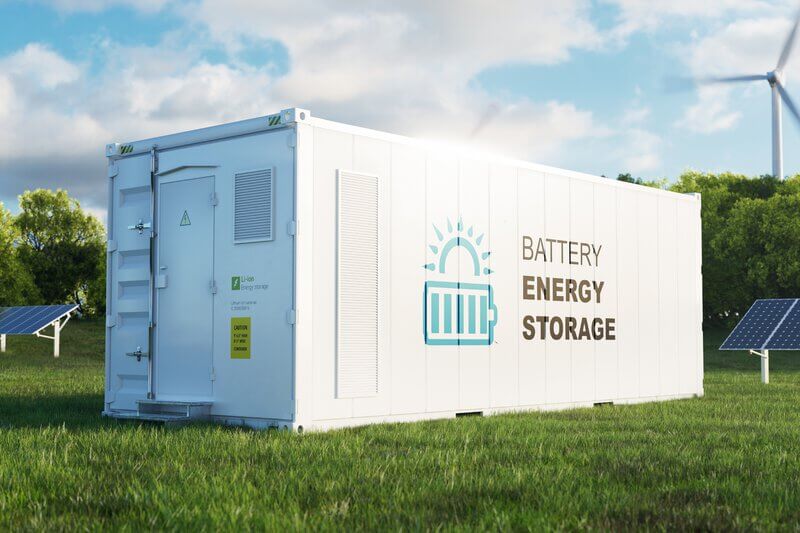
Emerging Technologies in BESS Components
The dynamic landscape of Battery Energy Storage Systems (BESS) is witnessing continuous innovation, with emerging technologies pushing the boundaries of performance, efficiency, and sustainability. In this section, we'll explore some of the cutting-edge technologies shaping the future of BESS components.
Innovations in Battery Materials and Design:
1. Solid-State Batteries:
l Advancements: Solid-state batteries replace traditional liquid electrolytes with solid conductive materials, offering higher energy density, improved safety, and longer cycle life.
l Impact on BESS: Solid-state batteries show promise in BESS applications, providing enhanced energy storage capacity and safety features.
2. Next-Generation Electrode Materials:
l Advancements: Research is underway to develop novel electrode materials, such as silicon anodes, to increase energy density and improve charge/discharge efficiency.
l Impact on BESS: Integration of advanced electrode materials enhances the overall performance and lifespan of batteries used in BESS.
Advancements in Power Electronics and Control Systems:
1. Wide-Bandgap Semiconductors:
l Advancements: Wide-bandgap semiconductors (e.g., silicon carbide and gallium nitride) are replacing traditional silicon, reducing power losses and improving the efficiency of power electronic components.
l Impact on BESS: Increased efficiency and reliability of inverters and converters contribute to overall BESS performance.
2. Advanced Control Algorithms:
l Advancements: Machine learning and artificial intelligence are employed to develop advanced control algorithms for EMS and monitoring systems.
l Impact on BESS: Smart algorithms optimize energy flow, predict maintenance needs, and adapt to dynamic grid conditions, enhancing BESS efficiency and responsiveness.
Integration with Internet of Things (IoT) and Smart Grids:
1. IoT Sensors for Real-Time Monitoring:
l Advancements: IoT sensors enable granular data collection, offering real-time insights into the condition and performance of BESS components.
l Impact on BESS: Enhanced monitoring capabilities support predictive maintenance, optimize energy usage, and facilitate communication with other smart grid elements.
2. Distributed Energy Resource Management Systems (DERMS):
l Advancements: DERMS integrate BESS with other distributed energy resources (DERs) and smart grid technologies for coordinated energy management.
l Impact on BESS: Improved coordination enhances grid stability, supports grid balancing, and maximizes the value of BESS in the context of broader energy ecosystems.
Breakthroughs in Safety Features:
1. Advanced Fire Prevention Technologies:
l Advancements: Integration of advanced fire detection technologies, such as early smoke detection systems and flame-retardant materials.
l Impact on BESS: Enhanced safety features minimize the risk of fires and improve the overall safety profile of BESS installations.
2. Self-Healing Battery Technologies:
l Advancements: Self-healing materials, such as polymers that can repair internal damage, are being explored to improve battery resilience.
l Impact on BESS: Self-healing technologies increase the robustness and longevity of batteries, reducing maintenance requirements and improving overall system reliability.
Environmental Sustainability Measures:
1. Recyclable and Sustainable Battery Chemistries:
l Advancements: Researchers are exploring recyclable materials and sustainable chemistries for battery manufacturing.
l Impact on BESS: Environmentally friendly battery components contribute to the overall sustainability of BESS, aligning with global efforts to reduce environmental impact.
2. Second-Life Battery Applications:
l Advancements: Retired electric vehicle batteries find a second life in BESS, providing cost-effective and sustainable energy storage solutions.
l Impact on BESS: Second-life batteries contribute to the circular economy, offering a more sustainable approach to energy storage.
As these emerging technologies mature, they hold the potential to revolutionize BESS components, making energy storage systems more efficient, cost-effective, and environmentally sustainable. Continuous research and development in these areas will shape the future of energy storage and accelerate the transition to a more resilient and sustainable energy landscape.

Conclusion
As we unravel the intricacies of BESS components, it becomes evident that the synergy between advanced batteries, sophisticated electronics, and intelligent management systems is driving a revolution in energy storage. Ongoing research and development hold the key to unlocking even greater potential, encouraging us to delve deeper into BESS components for a sustainable energy future.


 Residential Energy Storage System
Residential Energy Storage System Commercial & Industrial BESS
Commercial & Industrial BESS Residential inverter
Residential inverter